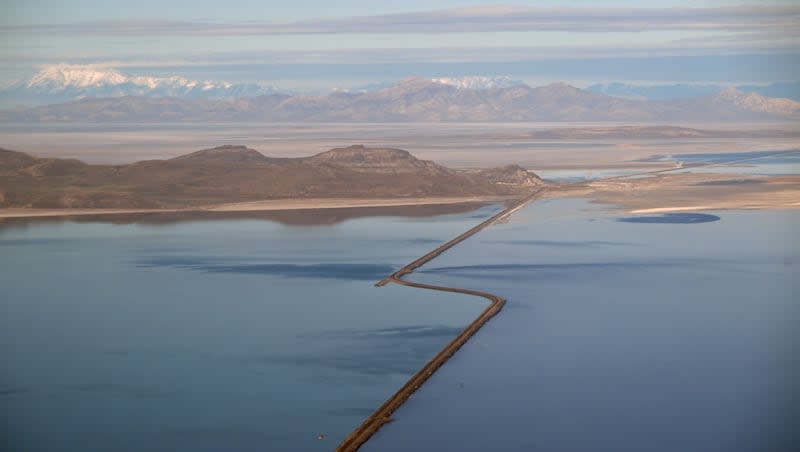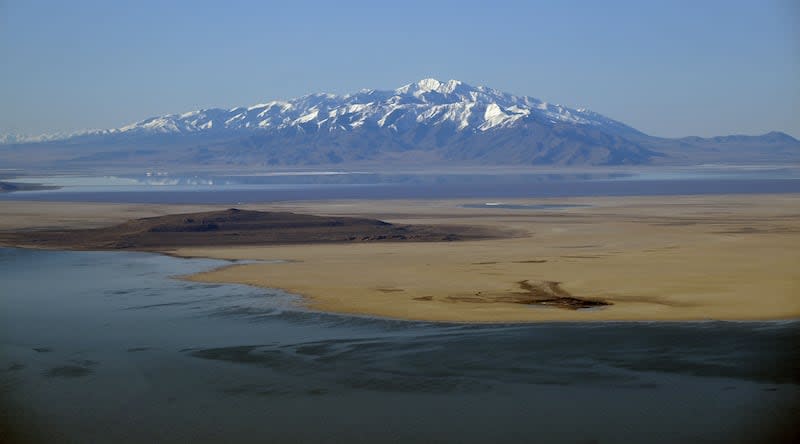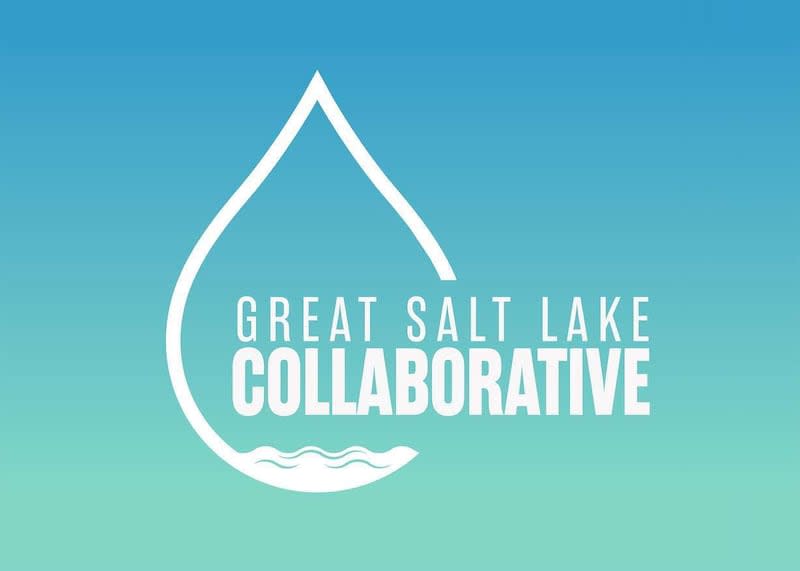How much will the Great Salt Lake rise? State to offer a reward if you guess it correctly

Editor’s note: This article is published through the Great Salt Lake Collaborative, a solutions journalism initiative that partners news, education and media organizations to help inform people about the plight of the Great Salt Lake.
Levels at the Great Salt Lake are higher now than at any point in the past five years, and those who are tasked with overseeing its level believe it will rise about another foot in the coming weeks.
The lake's southern arm is up to 4,194.6 feet in elevation, while its northern arm remains at about 4,191.4 feet in elevation as of Wednesday morning, per federal data. With what's left in the state's melting snowpack and what's projected with controlled releases, Great Salt Lake deputy commissioner Tim Davis says he believes the lake's southern arm will peak somewhere between 4,195.5 feet and 4,196 feet elevation by the end of the runoff.
"This is both a hope and an estimated guess," he said, during a virtual meeting with reporters on Wednesday.
Its peak this year is anyone's guess, though. Many variables could factor into this, such as weather, water consumption and how much water the lake receives from upstream reservoirs.
The Utah Department of Natural Resources launched a contest this week, where Utahns can guess what the final peak of the lake will be at the end of the snowpack runoff. Officials promise the winner will earn "bragging rights," but they'll also be given some department swag if they win.
"The prize is a surprise, but it's more than bragging rights," said Madison Weber, a spokeswoman for the Office of the Great Salt Lake Commissioner.
What's fueling this year's expected rise?
Agency officials said they are actively looking at ways of retaining water the lake receives and finding ways to get more water to the lake, as the southern arm's estimated peak may still end up 2 to 2½ feet shy of the lake's minimum healthy level. They also know the lake will recede over the summer and early fall because of its natural cycle.
What helps is there are still 14.8 inches of snow water equivalent left in the Great Salt Lake Basin, according to the Natural Resources Conservation Service. That’s about 109% of normal for late-April and two-thirds the basin’s snowpack peak of 23.2 inches on April 1. Its peak was also above the median average for the region.
This has helped the lake's tributaries push more water into the lake. The Bear River, for example, has averaged a flow of 2,440 cubic feet per second over the past two months, which has sent 4,836 acre-feet — or more than 1.5 billion gallons — of water to the lake every day in that time, according to Davis.

Most reservoirs in the basin are at or near full capacity because of last year's record snowpack, too. This means water managers are sending extra water to the lake's tributaries through controlled dam releases to avoid flooding concerns, which is helping the lake.
The Jordan Valley Water Conservancy District estimates about 85,000 acre-feet of water — a little more than the size of Echo Reservoir at full capacity — has been released from Utah Lake already this year. That has traveled toward the lake either through the Jordan River or the Jordan Surplus Canal. Weber Basin Water Conservancy District officials say they've released about 113,100 acre-feet out of Willard Bay, which has also ended up in the lake.
"There's been a lot of water, given how much (we got from) last year's wet year (and) this year's above-average year," Davis said.
Great Salt Lake Commissioner Brian Steed said the state will keep the breach at the Great Salt Lake Causeway open this year, sending more water from the southern arm to the northern arm. That will limit this year's growth in the southern arm, but should reduce the difference between the two arms.
A berm at the breach was raised twice in recent years to reduce inflows into the northern arm amid rising salinity levels as the lake reached a record low in 2022, but more water is flowing into the northern arm now that the southern arm's salinity levels are back to normal.
Combating an expected decline
Experts know the lake's levels will fall again this summer, between evaporation and water consumption, especially as the irrigation season begins in earnest.
What hurts is early long-range climate models indicate Utah could be in for a hotter and drier summer than normal this year. The Great Salt Lake Strike Team — composed of state and higher education researchers — wrote last year that direct evaporation from a warming climate accounts for about 8% to 11% of the lake's demise.
Warm and windy conditions this month have likely already hindered some of the gains the lake could have made this spring, Steed said. More of that would be less than ideal.
"If that continues into the summer, we would anticipate to see a higher evaporation loss, which is something that would concern us," he said. "Part of the challenge is (that) as the lake continues to rise, it actually spreads out more. And as it spreads out more, you end up having more evaporative loss because it's shallower and that area is warmer."

Yet researchers say natural and human consumptive uses are the biggest driver of the lake's decline, accounting for about 67% to 73% of its loss. If the summer outlook comes to fruition, people may consume more water for agriculture or for their lawns than in a cooler and wetter summer.
The state has worked to combat this by directing more than $200 million toward an agriculture optimization program, which helps farmers and ranchers pay for projects to improve their water efficiency. Steed said members of the strike team also met this month to begin work on a projection for how much the lake will need this year to limit declines.
The additional work will include sifting through new laws that take effect next week, such as new regulations for mineral companies using water. Through that, it appears the lake will need over 400,000 acre-feet of water every year to make up for all the losses in recent decades so it can eventually reach and exceed its minimum healthy level of about 4,198 feet elevation.
Steed says he understands that figure is a "tall order" and it's why he anticipates the state will have to plan out how much the lake gets every year to prevent the lake from collapsing into an environmental mess.
"Unless we have a continued series of really great winters, I don't anticipate this being recovered in a year or two," he said. "We're going to be in this for the long haul."


